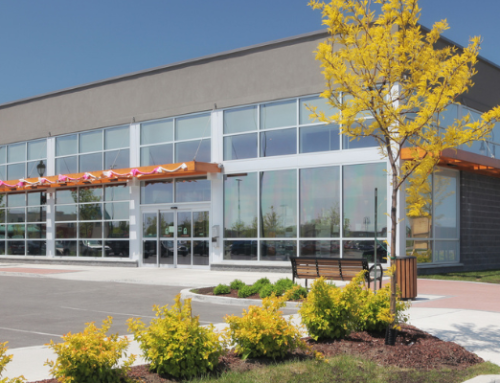By Jennifer French, CPA
Prolonged supply chain disruptions, labor challenges, and higher materials prices are proving to be too much for some construction contractors. It’s evidence of a growing trend of construction bankruptcy.
The business of construction is a hard one even without a global pandemic. An estimated 45 percent of construction businesses will close within the first three years, and less than 20 percent will make it to 20 years. Construction bankruptcy is at its highest in almost ten years. Specialist contractor insolvency rose the highest in a year over year average.
COVID-Related Challenges Spurring Contractor Bankruptcy
Earlier this year, a Florida contractor filed for Chapter 11 bankruptcy, citing ongoing challenges related to COVID-19, including substantial labor and materials shortages. In its filing, the contractor also mentioned the role that fixed price and fixed schedule contracts had on its business. It’s working to complete as many of or all projects and pay its employees while the filing works its way through the court.
This isn’t expected to be an isolated occurrence.
More Insights
- Chapter 11 bankruptcy is more along the lines of a court-appointed reorganization and doesn’t necessarily mean the contractor will close its doors.
- Chapter 11, Subchapter 5 bankruptcies is a newer option for small businesses with less than $2.7 million in debt. Like its parent filing, Subchapter 5 bankruptcies are a financial restructuring process.
- Chapter 7 bankruptcy is a liquidation of assets; the business will not reopen. Sometimes, businesses may start with a Chapter 11 filing but then discover they cannot pay their creditors, and the bankruptcy proceeds to Chapter 7.
While the most common cause of bankruptcy in construction companies is cash flow, there’s often a series of events or issues that build up over time. Maintaining profitability is hard when the work itself is bid in a cost-sensitive environment. Consistently underbidding just to keep work flowing might seem like a good idea, but this strategy can further squeeze contractors already short on staff and supplies.
Soaring costs, difficulty finding skilled labor, and inflexible contracts in an inflationary environment contributed to the bankruptcy filing mentioned above. These challenges are common for many contractors bidding on private jobs in 2023.
And because construction projects tend to be multi-year engagements, a contract from five years ago may be unmanageable in today’s market. For some contractors, one late payment can have a cascading effect across the business.
Sometimes, identifying and dealing with red flags early can go a long way in avoiding future financial distress. Persistent staffing issues, consistently delayed materials deliveries, and concerns over paying vendors and subcontractors on time are warning signs. A contractor will need to address these issues or run the risk of severe financial consequences.
Ensuring Timely Payments from Project Owners
A big factor with contractor cash flow planning is when the project owner pays an invoice. Because many contractors frontload the cost of materials and labor for projects, when an owner fails to pay on time, the contractor may struggle to meet its own obligations. Virginia and North Carolina both offer some level of relief in this regard.
In Virginia, project owners now have 60 days to pay contractors after they receive an invoice. Contractors also must follow the 60-day rule when paying subcontractors, or within seven days of receiving payment from the project owner, whichever is earlier. Repealing the “pay-if-paid” clause took effect on January 1, 2023. While it helps to ensure contractors get paid on a timelier basis, their own failure to comply can also result in interest and penalties.
In the same Virginia legislation, contractors working on public projects can be held liable for all payments owed to subcontractors regardless of whether the contractor gets paid. This change can add different layers to contractors’ cash flow planning.
North Carolina also prohibits “pay-if-paid” clauses. Even though both Washington, D.C. and Maryland uphold the clause, they also allow conditions to circumvent it by adding “pay-when-paid” clauses in contracts.
Especially for contractors doing business in different regions, it’s important to understand where risk is concentrated and where there are deadlines for either receiving or processing payments.
Considerations Before Declaring Bankruptcy
If cash flow problems are escalating to the point that a construction contractor is thinking about bankruptcy, consider making immediate changes to accounts receivable and accounts payable.
Any outstanding balances still remaining in A/R should be collected to the extent possible. At a critical stage in the business, this might mean filing a mechanic’s lien to claim the funds, if the deadline hasn’t already passed.
Money going out in A/P should also be negotiated with creditors and vendors. Extending payment deadlines and adjusting contracts are still preferable to those companies than waiting their turn in bankruptcy court.
In either case, contractors will need the help of knowledgeable construction attorneys and accountants to help them navigate these challenges.
Sometimes, a business may need to take certain actions before filing for bankruptcy. Performing a financial analysis is one example; considering the role that bankruptcy has in the larger plan for the business is another. Despite the goal of wiping away debts, bankruptcy is costly and can have significant detrimental effects on the contractor’s ability to start another business.
There are also considerations for open contracts. When a contractor declares bankruptcy, they are also negatively impacting project owners and potentially opening the door to additional litigation. When there are larger jobs with multiple subcontractors, the contractor may be required to provide proof of payment before the project owner pays the balance in full.
Despite the warning signs for some, the outlook for commercial construction is positive. Contractors bidding on private jobs this year probably need to evaluate their cash flow forecast, while public jobs from the Infrastructure Act, Inflation Reduction Act, and CHIPS Act will remain a safe bet for those in public work.
Are you concerned about the solvency of your construction business, or just want to know more about how to protect your business from unnecessary risk? Contact Jennifer French, CPA, team leader of PBMares’ Construction and Real Estate practice.





